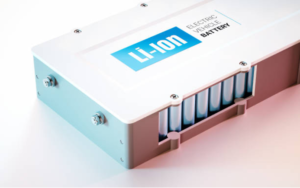APPLICATIONS OF TECHNOLOGY:
- Advanced lithium ion (Li-ion) batteries
BENEFITS:
- Achieves high energy density, long cycling life, improved safety, and reduced cost compared to previous technologies
- Allows commercial silicon-based materials to function properly in commercial cell conditions, addressing the most critical problems of both electrode mechanical degradation and electrode surface reactions of the silicon materials
- Can also be used for Na-ion batteries
- Provides active material interface protection and passivation
BACKGROUND:
- Silicon has been regarded as one of the most promising next generation Li-ion battery anodes due to its exceptional capacity and proper working voltage. However, silicon materials are plagued by critical problems of both electrode mechanical degradation and electrode surface reactions. This invention describes a novel functional conductive polymer binder invention.
TECHNOLOGY OVERVIEW:
Researchers at Berkeley Lab have developed novel functional conductive polymers and significantly enhanced their application in the electrode fabrication. This material is highly conductive while providing strong adhesion to the electrode surface.
The technology provides for a novel conductive polymer and its application in Si-based electrodes. The cell testing was performed in a SiOX/graphite electrode against a Li-metal counter electrode coin cell. Results demonstrated the overall integrity of the electrode system. Battery cells made by this novel binder possess superb electrode cycling stability and excellent coulombic efficiency. Full cells have been fabricated and tested for 50 cycles in the lab.
The invention allows commercial Si-based materials to function properly in commercial cell conditions and ultimately overcomes the most critical issues that hinder the overall electrochemical performance of a battery cell.
DEVELOPMENT STAGE: Proven principle
FOR MORE INFORMATION:
https://liulab.lbl.gov/publications/high-capacity-and-high-density
Journal of the Electrochemical Society (2021) 168 050533, DOI: 10.1149/1945-7111/abff01
PRINCIPAL INVESTIGATOR:
STATUS: Patent pending.
OPPORTUNITIES: Available for licensing or collaborative research.
